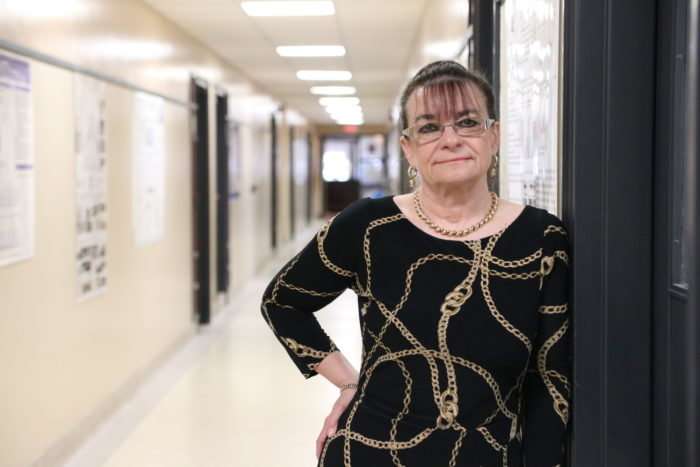Credit: Paul Mayne // Western News
The Middle Ages – spanning the 5th to 13th centuries – witnessed the rise of the Catholic Church, the spread of Islam and social and political transformation that laid the foundation for the Renaissance and modern Western civilization.
While greed, pride and curiosity brought about some of that change, Melitta Adamson argues food and climate change were the main drivers.
"Climate is rarely mentioned as a major factor in the food choices people made and the social and political upheaval that could result from climate change," Adamson said.
The Modern Languages and Literatures professor and food historian is among the first scholars in her field to document how climate change, with its critical impact on food production, shaped the Middle Ages (or Medieval Period) through famine, disease and war.
Adamson's paper, "Climate Change and the Medieval Diet," is a timely reminder to governments, policy-makers and the general public that history may very well repeat itself and that the past holds lessons this generation can tackle in the future.
Scientists only recently have charted medieval weather data by studying ice cores, tree rings, pollen remains and ocean sediments. A warm period lasting from around AD 800 to 1300 was bookended by two cold stretches: one from the 6th to the 7th centuries, the other from the late 13th to the mid-19th centuries.
Adamson combined this data with her research in medieval food practices she found in contemporary writings, including medieval cookbook manuscripts, medical literature, household accounts, church records of wine production and grape harvests, and narrative texts describing people's food habits.
Adamson attended the University of Vienna and received her Ph.D. in Germanic Languages and Literatures from the University of Toronto. She is widely recognized as the leading authority on medieval cuisine and cookery.
Her book, Food in the Middle Ages, explored how the common foodstuffs available, how and what they cooked, ate, and drank, what the regional cuisines were like, how the different classes entertained and celebrated, and what restrictions they followed for health and faith reasons. Drawing on a variety of period sources – literature, account books, cookbooks, religious texts, archaeology, and art – it provided fascinating information, such as on imitation food, kitchen humor, and medical ideas. Many period recipes and quotations flesh out the narrative.
Showed how food was a status symbol then, and sumptuary laws defined what a person of a certain class could eat – the ingredients and preparation of a dish and how it was eaten depended on a person's status, and most information is available on the upper crust rather than the masses. Equalizing factors might have been religious strictures and such diseases as the bubonic plague, all of which are detailed here.
Adamson's latest paper brings climate change into the discussion.
The first cold period (Late Antique Little Ice Age) from the 6th to the 7th centuries caused massive famines in Europe and Asia. With malnourishment making people more vulnerable to disease, epidemics left millions dead. During this time, Slavic peoples migrated to the eastern part of Europe, and people of central Asia to China, in search of pastureland, Adamson noted.
Meanwhile, a wetter climate in the Arabian Peninsula meant more vegetation and a better diet for humans and animals. This contributed to the rapid expansion of the Arab Empire.
In AD 711, Arabs landed in Spain. They brought with them Greek classics, and their knowledge of science and medicine, which would become critical in developing Renaissance Europe in the later centuries.
The Medieval Warm Period that started around AD 800 and lasted almost half a millennium reversed people's fortunes in Europe. The changed climate meant more favourable weather conditions and an agricultural revolution that led to flourishing cities, booming trade and exploration. Norsemen settled in Iceland and Greenland and from there, reached Newfoundland and Labrador around AD 1000.
By the beginning of the 14th Century, Europe's climate became more extreme, colder and stormier – a time known now as the Little Ice Age. Prolonged frost, storms and cold summers ravaged staple crops and resulted poor harvests, famines, disease and war.
Prior to the Industrial Revolution, natural causes such as volcanic eruptions, changes in solar activity and natural fluctuations of greenhouse gases caused climate changes.
Adamson explained that recent climate change, especially since the mid-20th Century, is predominantly caused by man-made activities – and many parts of the world are also feeling its effects on food production.
Provided by University of Western Ontario
























